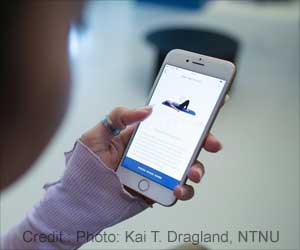Group lifestyle guidance combined with the mobile application resulted in improved diets and narrowed waist circumference of the participants.

TOP INSIGHT
Lifestyle guidance in a group and an application that supports the adoption of new habits using an approach called nudging, generates sustainable behavior change in type 2 diabetes.
Read More..
The purpose of the BitHabit application is to automate the adoption of new habits and to generate a sustainable behaviour change. The application allowed the participants to make healthy choices that suited them and tick them as accomplished.
The new habit may be e.g. taking healthy snacks to eat between meals at work, so that hunger in the afternoon does not cause fatigue and unhealthy choices.
"Surprisingly, the application was used more actively by the older participants. In other words, it is worthwhile to offer digital alternatives to people in an unprejudiced manner, regardless of their age," explains Marja Harjumaa, Senior Scientist at VTT Technical Research Centre of Finland, who is involved in the development of the application.
The study showed that the Finnish Diabetes Risk Score (FINDRISC), the most widely used risk test for type 2 diabetes in the world, effectively identified people at increased risk without laboratory testing.
The best way to reach people and get them involved in the study was through social media and the editorial content of newspapers. In particular, journalistic articles with personal interviews brought vast numbers of people to the risk screening website. The visibility acquired through social media, on the other hand, is mostly subject to a charge. In any case, to be successful, informing still requires contents that the target group finds interesting.
In StopDia, the information disseminated in workplaces reached women in particular.
The StopDia study examined how to reduce the risk of type 2 diabetes not only by providing individual lifestyle support but also by targeting the living environment and at the level of society. Environment has a powerful impact on decision-making and behaviour. Decisions are only partly based on conscious deliberation. A great deal of daily choices occur automatically - often unnoticed.
The StopDia at Work study aimed at altering the choice architecture of working environments to facilitate healthy dietary choices and physical activity at the workplace. This approach, also known as nudging, differs from the more conventional methods used for promoting wellbeing at work, such as campaigns and sports benefits.
Preliminary results suggest that the consumption of vegetables, fruit and nuts during working hours among the employees of participating workplaces was greater at the end of the study compared to the beginning of the study. No difference was observed in the consumption of savoury and sweet delicacies. Performing restoring break exercise, such as stretching, was also more common at the end of the study.
The Stop Diabetes (StopDia) study is funded by the Strategic Research Council (SRC), operating in conjunction with the Academy of Finland. The project is part of the Health, Welfare and Lifestyles (HEALTH) programme that ended this year. The study was conducted by the University of Eastern Finland, the National Institute for Health and Welfare (THL) and VTT in collaboration with local and regional authorities, and regional healthcare operators. There were also more than 20 societal operators involved in the activities, including such organisations as the Finnish Diabetes Association and the Finnish Heart Association, as well as approximately 40 employers.
Source-Eurekalert
 MEDINDIA
MEDINDIA




 Email
Email





